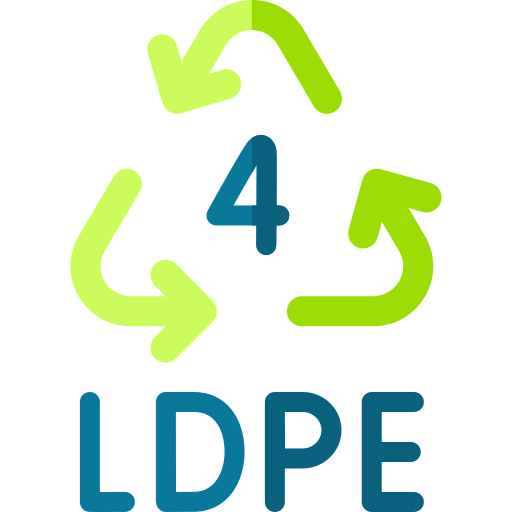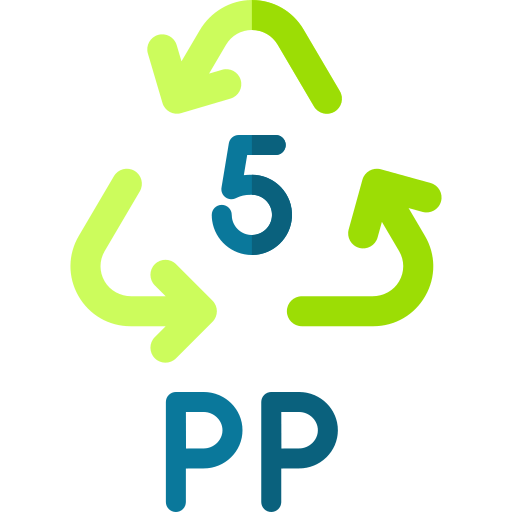Having knowledge of the different types of plastic is critical to understanding the complexity of recycling, upcycling and the health factors associated with plastic.

Plastic is defined as a material that contains an essential ingredient an organic substance of large molecular weight. It is also defined as polymers of long carbon chains. Their plasticity makes it possible for plastics to be moulded, extruded, or pressed into solid objects of various shapes.
Plastic was discovered by famous German chemist Christian Schonbein in 1846. Plastics were actually discovered accidentally. Christian was experimenting in his kitchen and by accident, he spilt a mixture of nitric acid and sulphuric acid. To mop that solution (a mixture of nitric and sulphuric acid) he took a cloth and after moping he kept it over the stove. After some time, the cloth disappeared and from their plastic got its name.



Source: compactor-runi.com
 Polyethylene Terephthalate (PETE)
Polyethylene Terephthalate (PETE)
Polyethylene Terephthalate (PETE), commonly referred to as PET, is a versatile plastic resin widely used for items such as bottles, food containers, plastic bags, and packaging materials. It also serves as the basis for polyester fibers in textiles and finds applications in construction materials, showcasing its versatility across different industries.
 High-Density Polyethylene (HDPE)
High-Density Polyethylene (HDPE)
High-Density Polyethylene (HDPE) is a versatile plastic resin used for various items, including bottles, pipes, containers, toys, and packaging materials. Its durability and resistance to chemicals make it suitable for applications ranging from water bottles to industrial pipelines.

Source: greenpet.biz

Source: omnexus.specialchem.com
 Polyvinyl Chloride (PVC)
Polyvinyl Chloride (PVC)
Polyvinyl Chloride (PVC) is a widely used plastic commonly found in items such as pipes, electrical cables, vinyl siding, window frames, and a wide range of consumer and industrial products. Its adaptability, durability, and cost-effectiveness have made PVC a popular choice in construction, manufacturing, and everyday items.
 Low-Density Polyethylene (LDPE)
Low-Density Polyethylene (LDPE)
Low-Density Polyethylene (LDPE) is a versatile plastic known for its flexibility and durability. LDPE is commonly used in the production of plastic films and sheets, such as plastic bags, food packaging, and agricultural films. It is also used in various containers, including squeezable bottles, and as a coating for paper and cardboard to provide water resistance.

Source: greenpet.biz

Source: recyclenation.com
 Polypropylene (PP)
Polypropylene (PP)
Polypropylene (PP) is a versatile thermoplastic polymer known for its strength and heat resistance. PP is commonly used in a variety of items, including packaging materials, such as plastic containers, bottles, and caps. It’s also found in textiles, automotive components, medical devices, and a wide range of consumer and industrial products.
 Polystyrene (PS)
Polystyrene (PS)
Polystyrene (PS) is a lightweight and rigid plastic often used in various products and packaging materials. Common items made from polystyrene include disposable foam cups, food containers, packaging peanuts, and protective packaging for electronics. It’s also used to create various consumer goods, including toys, CD cases, and even insulation materials.

Source: cohenusa.com

 Miscellaneous Plastics
Miscellaneous Plastics
Miscellaneous Plastics” include a diverse range of plastic materials used in various applications, such as Polycarbonate (PC), Polyurethane (PU), Acrylonitrile Butadiene Styrene (ABS), and more, each with specific uses in industries like electronics, automotive, and packaging.
We are passionate about building a sustainable plastic waste management value chain to benefit people, businesses and the environment.
Forming stronger relationships with our partners on the ground is integral to our work ethos. Our waste collector Partners , aggregators and bulk generators receive fair value for their activities. Our impact begins at the start of the value chain!
Our products and Services serve businesses across a plethora of quality-sensitive applications. We help our customers make their supply chains sustainable and fulfil their environmental obligations. We always aim to expand our reach and the scale of our impact.
We address and contribute in global waste management problem by preventing waste streams, from going to landfills and water bodies. Instead, we handle them in environment friendly manner by creating a variety of sustainable recycled materials from such waste.
Help Line: 1800 233 3002 Contact: (0261) 2223002
info@eco-vision.co.in
hr@eco-vision.co.in
Survey No.12-13, Near Torrent Power Sub Station, Bhatar - Bamroli Road, Bhatar, Surat - 395017 (Gujarat)